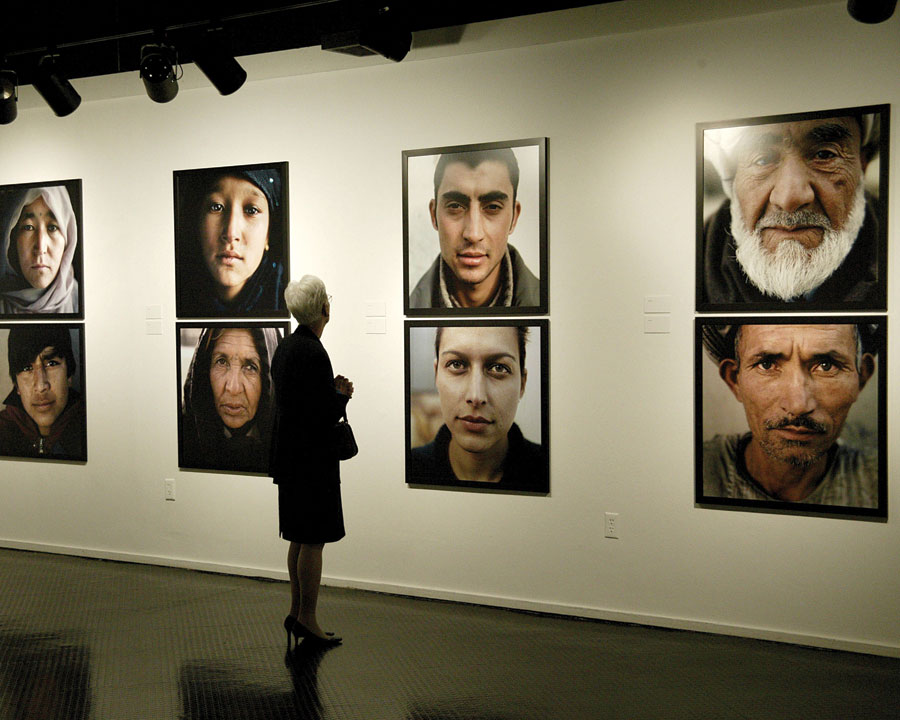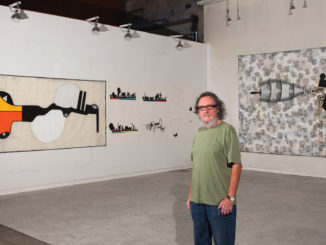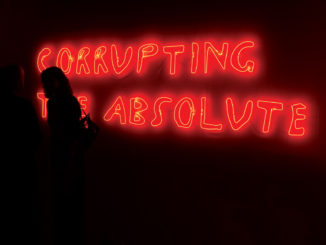
As South Florida changes and grows, so, too, does Miami Dade College, one of the nation’s largest educational institutions. And one of the finest examples of how it’s improving to meet the needs of the community is its vaunted Art Gallery System, a completely integrated museum-classroom-conservatory network that offers visual arts in every possible form. From its start years ago as a new collection, to its present day status as one of the premiere art repositories and exhibition venues, the Art Gallery System is the perfect example of how South Florida and the educational institutions that are its underpinning continue to mature.
MDC began amassing its collection in the late 1960s. At that time, it was a pioneer of sorts: South Florida would not begin its artistic renaissance for a good 15 years. There were few options available in terms of galleries, museums, or exhibition spaces, but its earliest curators such as Robert Sindelier and Shaldon Laurie envisioned more and made every effort to bring Miami and South Florida to the fore in the visual arts community.
“Being the largest art network in Florida is a unique condition,” says Jorge Gutierrez, who has been the Art Gallery System Director/Chief Curator since June 2005. “It means providing the different and diverse communities of South Florida an opportunity to be part of the art experience – free and open to the public – with a diverse program of exhibitions that are presented to give our visitors the opportunity of contemplating and understanding, unfolding and discovering the art experience.”
As Miami Dade College has expanded over the years, new art spaces have been integrated into each new campus. The Art Gallery System has more than 45,000 square feet of exhibition space in its seven galleries and three public art spaces. The newest space, the MDC Medical Center Campus, is due to be included in the network imminently, and more use will be made of the Freedom Tower exhibition space in downtown Miami. There is a collection of more than 50 sculptures in Art in Public Places at the North Campus’s Miami International Sculpture Park, the Sculpture Plaza at the Wolfson Campus, and the Kendall Campus’s program.
Under a 2004 initiative of President Eduardo Padron, the Art Gallery System underwent a restructuring process which allowed all the galleries to integrate into one network. Padron believed that streamlining procedures and standards would allow the System to adapt more easily as new trends came up. At its core remained the belief that MDC must offer a broad, global perspective. This complete reorganization has been finished, and it involved operations, staffing, and the coordination of numerous programs. The end result has been more and better engagement with students, faculty, and art patrons.
This realignment came at the perfect time, because the demographics of South Florida are more in flux than ever. The average museum brings in 35,000 to 40,000 patrons, and the Art Gallery System ranges just above that with 45,000 annual visitors. Says Gutierrez, “Our attendance ranks as good at regional and national levels, but as the largest academic institution in America, our expectations and goals are higher.”
For some time now, MDC has had its work cut out for it. All through the 1970s, 1980s, and 1990s, there was a steady improvement in South Florida’s arts community. But with the enormous push of Art Basel Miami Beach, which debuted in 2002, contemporary art, the Art Gallery System’s forte, was given center stage. More visitors and students showed interest in this unique art form, and fortuitously the Art Gallery System was already in place to showcase some of its finest pieces. There are over 1,500 works of art in its permanent collection, making the Art Gallery System one of the most significant collectors in the area. It has pieces by contemporary icons such as Julian Schnabel, Andy Warhol, Louise Nevelson, Robert Rauschenberg, and Claes Oldenburg. “The audiences have changed as Miami has changed over the last decade; young generations of visitors with a broad perspective about art are frequent visitors of the galleries,” says Gutierrez. “We envision the galleries more as a research lab that brings together artists and audiences with the curators, art historians, faculty, and cultural analysts.”
Because it’s based within a college, the Art Gallery System has positioned itself well as a venue for exhibiting both student pieces and the artwork of non-student artists, many making their debuts. In addition to being a college nurturing young talent, MDC is also a museum rooted in South Florida, determined to bring visual arts to the public.
Gutierrez mentions specific exhibitions and thoughts about programming such as presenting themes and artistic proposals that have stayed true through the centuries but are still highly relevant to present-day society; testing the boundaries among technology, communication, and art that are so porous “art spaces in higher education institutions become a space for the ‘needed inventories’ in emerging art”; and in taking on the challenge of balancing local perspectives with global views, in what Gutierrez calls “an ongoing process of transformation. As an example, the college serves the Miami-Dade County community, but more than 128 nationalities are represented within our academic community. Students from the entire world are part of our audience. We try to combine the Miami-based artists with global-scope projects.”
{mospagebreak}
To try to do so these days takes a constitution of iron. The Florida Legislature, running low on revenues, has reduced its funds to the entire public school system, colleges included. Not only is funding for MDC slackening, but scholarship reductions threaten the student population – and this in a college long known for being welcoming to students on minimal budgets. So, one of the greatest concerns right now is fund-raising in a time of overall belt-tightening. And while budgets and funding are a worry across the state, South Florida presents its own specific challenges. One of the most daunting is, Gutierrez says, “the integration and creation of constituencies and communities for art on a local and global context. The art space as a transdisciplinary experience should be also a space for exchange in what seems to be a fractured community geographically, and in the way it relates to its cultural institutions.”
An added challenge is the fact that the Art Gallery System makes its venues available to the public at no charge. In addition, there is tremendous emphasis on community outreach, some of which is conducted in conjunction with other groups and institutions. The public is invited to educate itself via gallery tours, lectures, workshops, and discussions. Interns are given hands-on experience in the professional art world when they are placed into positions inside galleries. There is the Gallery Management Series, a training program in museum issues, and other programs such as Teaching the Untouchable, the Urban Culture Lab, and Art Critics and the Media, which is set within criticism seminars organized in partnership with the ArteAmericas art fair.
Through the use of publications, special outreach, and showings, the Art Gallery System seeks to bring to the public unique and innovative artwork that is the catalyst for thought and discussion. Happily, it is difficult to prioritize the Art Gallery System’s options within the community. Is it first and foremost an incubator for students and professors? Or does its real value come clear as a museum and repository for the public? Where does its major emphasis lie – in contemporary art and its connections with Art History? Gutierrez sees them all as top-tier priorities.
“The permanent collection is now part of a direct-contact education program. Our donation of artworks has expanded in a significant manner, and our international exchange program is now moving, and exhibitions like Goya, Beyond Borders, and Dali, and projects like Miami/Canary Islands, Miami-Berlin, East-West, the Miami Biennial, the Miami Photo-Fest projects, and the incorporation of the Freedom Tower as a museum-cultural center are of special pride. Overall, it is a challenge to provide Miami art spaces as a paradigm to invite meaning and active thought, especially for the future art audiences of South Florida.”



Be the first to comment